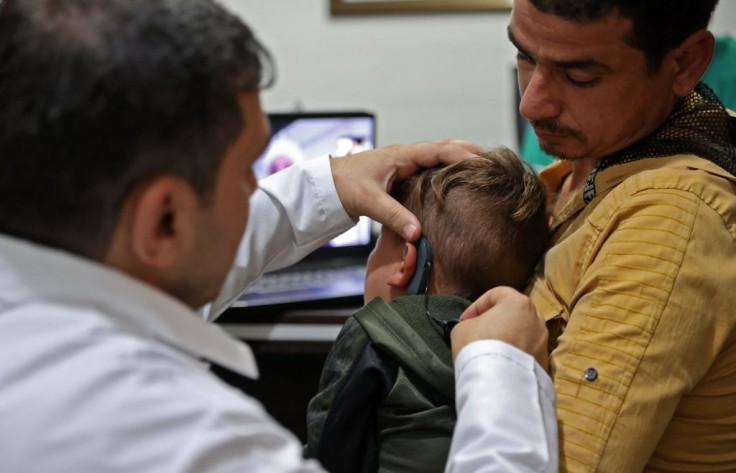
A heartwarming moment was currently captured by an Australian mom who shared a touching video of her son encountering hearing for the first time after undergoing cochlear implant surgery.
Son's Priceless Reaction Upon Hearing for First Time
In the video shared on Facebook, Tessa McKenna's son Nate responds as his cochlear implants are adjusted, bursting into a sweet smile upon hearing his parents' voices for the first time post-procedure.
McKenna addresses Nate, asking if he can hear her before adding a jingle. Nate's cheerful response is apparent as he turns towards his mother, beaming and reaching out to kiss her hand.
Illustustraing Nate as tough, strong, and brave, McKenna describes in her post that Nate's hearing had depreciated to the point where hearing aids were no longer efficient, resulting in them to choose for cochlear implants.
Cochlear implants work by transmitting sound signals precisely to the hearing nerve, bypassing the need to augment sounds like common hearing aids.
McKenna conveyed pride in her 3-year-old son, highlighting his determined spirit and cheerful personality.
This heartfelt moment emphasizes the transformative influence of cochlear implants in giving individuals a newfound sense of hearing and the probability to fully engage with the world around them.
McKenna, who also shared the video through Storyful, conveyed her and her husband Ty McKenna's immense pride in their 3-year-old, emphasizing his constant energy and playful nature, which they find captivating.
11-Year-Old Boy Born Deaf Was Able to Hear for the First Time
Aissam Dam, an 11-year-old boy, was born deaf and grew up in silence, communicating with a self-invented sign language and receiving no formal education in his impoverished Moroccan community.
However, after his family relocated to Spain last year, a hearing specialist suggested a groundbreaking option: Aissam might qualify for a clinical trial using gene therapy to potentially restore his hearing.
On October 4, Aissam became the first person in the United States to undergo gene therapy for congenital deafness at the Children's Hospital of Philadelphia. The success of the treatment introduced him to a world of sound he had never known.
Aissam's deafness stems from a unique form caused by a mutation in the otoferlin gene, influencing around 200,000 people worldwide.
The gene therapy aims to take over the mutated gene with a functional one, possibly allowing hope for other forms of inborn deafness as well.
While the therapy's success is a breakthrough in the field of gene therapy, finding appropriate candidates for the trial posed difficulties.
Some within the Deaf community view deafness not as a condition necessitating treatment but as a cultural identity.
Additionally, cochlear implants, the standard intervention for otoferlin deafness, are often received in infancy, making older children like Aissam rare candidates for the trial.
Aissam's journey from a silent world in Morocco to the possibility of hearing in Spain reflects both the complexities and promises of groundbreaking medical advancements.